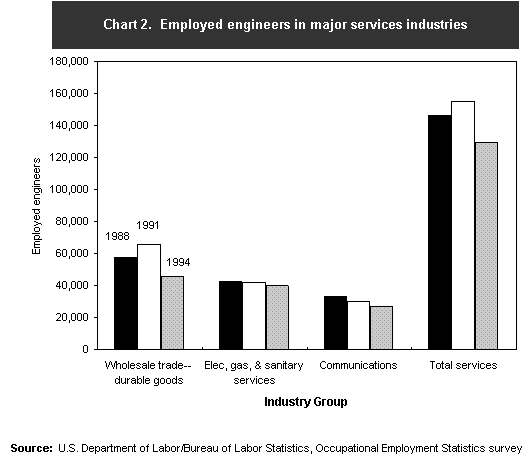Morrison
Engineering employment was severely affected by the downturn, as the 1994 total of 129,800 engineers employed in the services sector represented a drop of 11 percent from 1988 and 16 percent from 1991 (table 1).
Technicians suffered proportionately more than scientists and engineers, as technician employment in the services sector fell from 270,500 in 1988 to 258,900 in 1991 and then to 237,500 in 1994, a reduction of 12 percent over the 6-year period.
Principal Employers
The services sector is divided into three major industry groups: transportation, communications, and utilities; wholesale trade; and retail trade. Within those industry groups, 3 industries accounted for 80 percent of total employed scientists and
engineers (S&Es) in the services sector in 1994, down from 85 percent in 1988. These industries are wholesale trade-durable goods (31 percent of services S&E employment in 1994); electric, gas, and sanitary services ("utilities," 29 percent); and
communications (20 percent). Most of the total sectoral drop in S&E employment between 1988 and 1994 occurred in wholesale trade-durable goods, where 13,500 S&E jobs (19 percent of the 1988 S&E work force) were lost, and in communications, where
9,000 S&E jobs (20 percent of the 1988 S&E work force) were lost (chart 1).



 [1]
[1]
